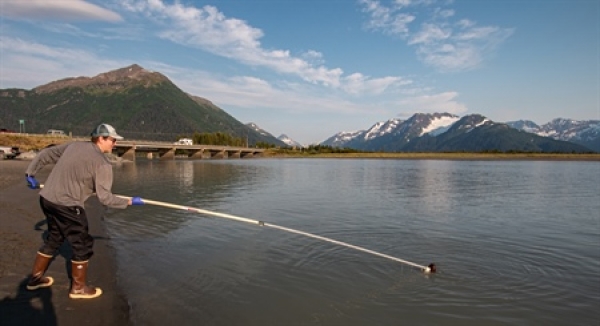Can a single bottle of ocean water contain enough scraps of genetic material for researchers to identify virtually all of the fish, plankton, molluscs, marine mammals and other organisms from that location?
Sounds like science fiction, but it’s not. The burgeoning field of environmental DNA (eDNA) is very real, and scientists are rapidly exploring ways to make this breakthrough technology more useful and available for non-scientists.
That’s what motivated NOAA scientist Zachary Gold to lead an effort to write a guide to help marine resource managers who may not have a molecular ecology background understand how to collect samples and extract detailed information about the biodiversity of their study areas. Co-written with a team of researchers from across the country, the guide was recently published in the journal PeerJ .
Read more at: NOAA
PMEL scientist Zachary Gold collects eDNA samples in Alaska's Twentymile River while researching seasonal changes in fish communities associated with Beluga whale foraging patterns in August 2021. (Photo Credit: Zachary Gold, NOAA)


